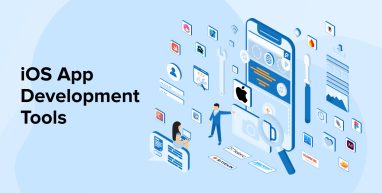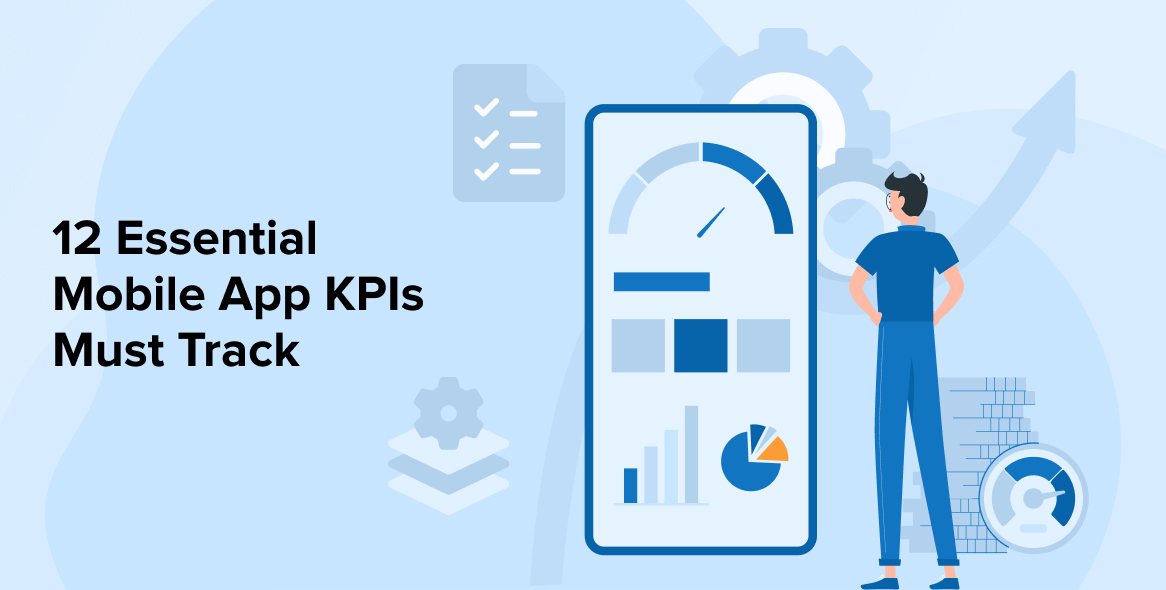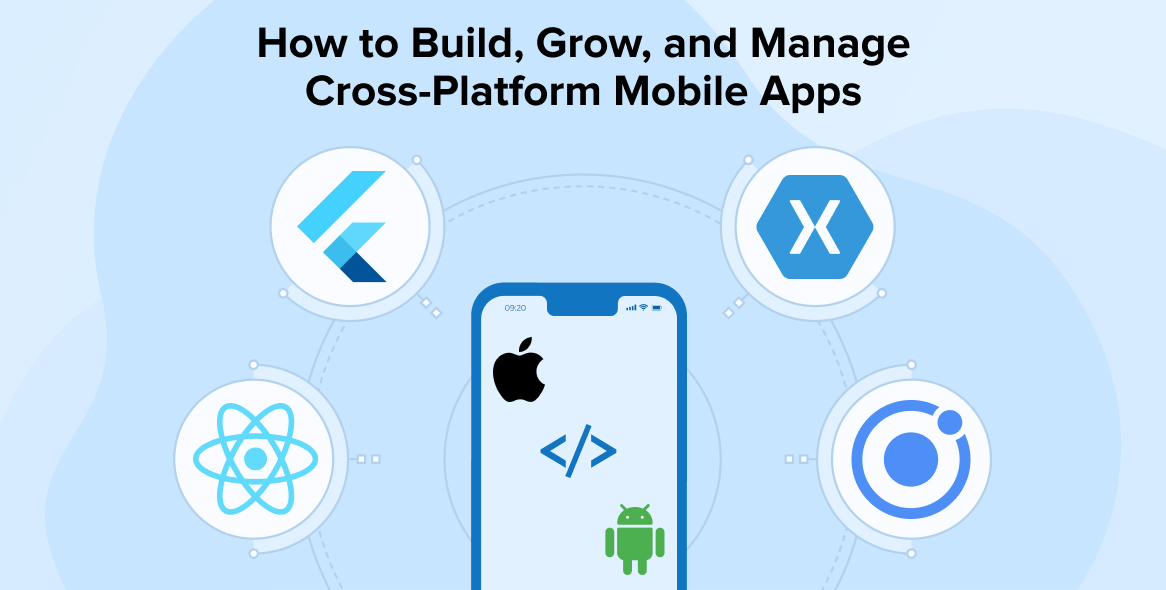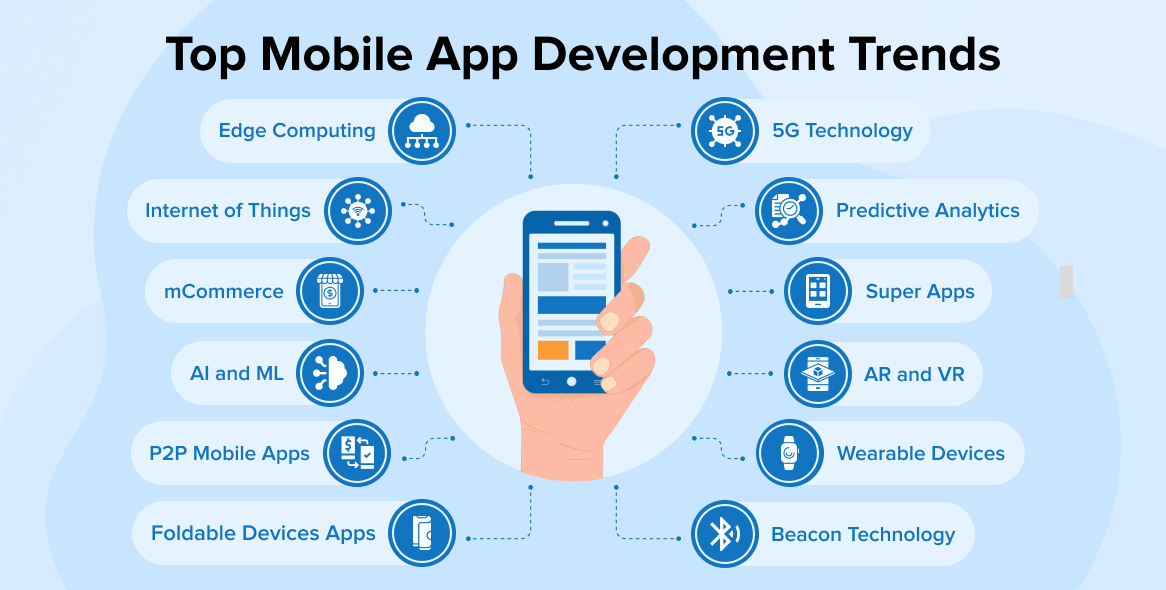
When it comes to mobile operating systems, the iOS platform is right up there with the best of all. Thanks to its dynamic technologies and powerful iOS app development tools, iOS app development companies have created incredible apps.
Every year, the app development industry, including companies like Apple and Google, sets new milestones for revenue generation. Therefore, the income is increasing year after year. According to Sensortower, consumers will spend more than $2T in apps between 2021 to 2030 globally. These numbers indicate that businesses need an iOS app and a trusted app development company that can build a high-performing app designed to deliver an exceptional user experience for end consumers.
The iOS App Store has beaten the Google Play Store in terms of revenue. That is the essence of the matter when it comes to the iPhone’s success. An increasing number of companies are creating advertising applications for the iOS platform.
The success of your app is dependent on the tool you choose to create it, whether you’re a student or an entrepreneur. Therefore, we have compiled a short list of some of the most popular and useful tools for iOS development that you may come across.
1. Top iOS Development Tools
Finding the right tool for developing an iOS app can be challenging due to the wide variety of options available in the market. To help developers make an informed decision, it’s important to explore the most popular iOS development tools.
1.1 Xcode (IDE & Editor)

For a smooth iOS app development experience, Xcode is a top choice among iOS development tools. This IDE, used by Apple for creating, developing, testing, and deploying apps for iOS devices. It is the backbone of all iOS app development and the most used IDE among professional developers. Developing apps in different settings also requires technology like Xcode.
Developers can take advantage of Xcode’s robust set of tools, including the Swift programming language and SwiftUI user interface framework, as well as TestFlight for product testing and Apple Store Connect for app publishing and management in the App Store. Developers also have access to Apple’s Xcode Cloud, a CI/CD architecture that enables faster builds in the cloud.
Price – Free
1.2 CocoaPods (Dependency Manager)

One of the most well-known dependency managers for iOS app development is CocoaPods. Installing frameworks and libraries from external sources is straightforward using CocoaPods. Versioning, dependency resolution, and compatibility checks are some of the other functionalities offered by CocoaPods. With over three million apps and over 68,000 libraries, CocoaPods is a widely used platform. With all of these features and benefits, CocoaPods is the best tool for creating elegant, scalable apps. It integrates easily with technologies like Swift and Xcode. Developing iOS apps becomes easier and more effective with CocoaPods.
Price – Free
1.3 Swift (Programming Language)

Swift is a programming language used to create applications for iOS, similar to Objective-C. Unlike C, Swift was developed specifically for use with Apple’s iOS and other Apple platforms. This led to Swift’s syntax being far more compact, user-friendly, and simplified. According to Apple, Swift is also 2.6 times faster than Objective-C.
Since much of SwiftUI is built from Swift source code, another advantage of utilizing SwiftUI is that merge conflicts are less likely to occur. Additionally, it offers a live preview feature that lets you see the code’s result while it’s being executed, saving you the trouble of having to create it again.
Integrating SwiftUI with other iOS development tools and frameworks has always been a significant advantage for developers working with SwiftUI. For example, when developing for iOS and tvOS, you can integrate SwiftUI with UIKit. Furthermore, SwiftUI is compatible with both macOS’s AppKit and watchOS’s WatchKit. This capability aids developers in following best practices for iOS app development, leading to improved outcomes.
Price – Free
1.4 AppCode (IDE & Editor)

The developers at JetBrains created AppCode. It is an intelligent and reliable tool for developing apps for both iOS and macOS. Languages such as Objective-C, JavaScript, C++, and Swift are compatible with this IDE. You can also extend its capabilities by adding plug-ins. AppCode is designed to help iOS developers quickly identify and fix various code issues. This code management tool saves developers time and, most importantly, makes coding easier.
Several built-in integrations are available in AppCode, including CocoaPods, HTTP Client, Reveal, Swiftify, SwiftLint, Dash, and many more. Many iOS app developers find AppCode to be the optimal solution because of these features.
Price – $199/ Year
1.5 TestFlight (Testing)

Apple’s iOS app developers can utilize TestFlight as a beta testing tool. With its help, programmers can release test versions of their applications to users. TestFlight’s feedback collection and crash reporting tools make it easier to analyze and enhance an app’s quality and performance. To use this functionality, you need to submit a beta version of your app to the App Store Connect and provide testers with an open-access URL.
More than 100 people on the team can use up to thirty smartphones to try out the apps. Up to 10,000 people can be invited to test out an app using a public sharing link.
Price – Free
1.6 Alamofire (Library)

In addition to Swift, Alamofire is another library that programmers can use to build iOS apps. It is an HTTP-based networking library that serves as an alternative to Apple’s native networking stack. It supports HTTP methods and also provides serialization, authentication services, network improvement, and a plethora of other features. When it comes to Swift, Alamofire is a popular choice for developing iPhone apps. This framework, which is written in Swift, handles web requests and responses on iOS and macOS. It supports JSON parameter encoding, authentication services, serialization, and network reachability monitoring.
Price – Free
1.7 RxSwift (Library)

Asynchronous programming is the main focus of the RxSwift library. For asynchronous and event-based coding, RxSwift employs functional operators. Asynchronous programming improves the application’s speed and responsiveness. Code can react and handle data in a neat, isolated, and sequential way with RxSwift. As a result, the application’s functionality is enhanced when code runs in parallel.
Price – Free
1.8 CodeRunner (IDE & Editor)

Since it can compile code, CodeRunner is beneficial for iOS app developers. It can be utilized to create robust and complex applications. You can use CodeRunner, a basic programming language, with 25 different languages.
It has a powerful text editor, a command-line interface, and programmable shortcut keys. Developers can identify errors in real-time and fix them without changing the app code.
Price – $19.99
1.9 Marvel (Design & Prototyping)

Businesses can design their iOS products efficiently with Marvel, an app that turns sketches into workable prototypes. Making interactive prototypes is easy with its drag-and-drop interface, and users can easily share and get feedback on their creations.
The platform is useful for designers and developers since it gives them a place to brainstorm, collaborate with others, and eventually build their applications around those ideas. In addition to streamlining version control with its built-in system and recording user sessions to better understand application usage, Marvel offers several other benefits for enterprises. For entrepreneurs looking to test their ideas and gain some feedback before diving into development, Marvel is the way to go.
Price – $12/Month
1.10 Fabric (Performance Monitoring)

Fabric provides a set of tools for app stability, crash reporting, and performance monitoring. It is now a component of Google Firebase. Developers can use it to find problems and improve the app’s speed so users have a smooth experience. Developers can also track how well their apps are doing and make modifications to make them better for users with Fabric. The versatility and portability of this technology make it easy to integrate into a technological framework. It facilitates rapid app development and feature addition for iOS developers.
Price – Free
1.11 Firebase (Release & Monitor)

For a long time, Google’s mobile app development platform, Firebase, has been a major player in the iOS development industry. The platform’s many robust features and functions make app development easier and better in general. This unique backend platform is perfect for building mobile apps that work on iOS and Android.
One of the few platforms that provides developers with a wealth of options to build apps according to their needs is Firebase. The platform’s primary objective is to address the unique difficulties of modern mobile app development. To begin, Firebase allows developers to release and monitor their apps with complete assurance, while also helping with quick iOS app development. On top of that, Firebase provides developers with tools to enhance user engagement.
Firebase frees up developers from the burden of creating the necessary services, allowing them to concentrate on improving the app’s overall usefulness. When compared to other iOS app development tools, Firebase stands out due to its numerous useful features. For example, it provides easy access to a plethora of Google services, including authentication, file storage, databases, push messaging, and more. Since Firebase is compatible with a wide variety of iOS app development tools, it is often the preferred choice among developers working on iOS apps.
Price – Free
1.12 Adobe XD (Prototyping)

When it comes to creating interactive designs for websites and mobile apps, Adobe XD is a popular choice for prototyping. You can use this tool to create mobile and desktop versions of your screens, wireframes, and prototypes. You can use Adobe XD on either Windows or macOS. With this all-in-one UX/UI design tool, designers can swiftly go from concept to prototype to production.
Price – Free with paid options (Starts with $9.99 per month)
1.13 Flawless (App Design)

With Flawless, developers can do a lot, including creating, analyzing, comparing, and executing iOS app designs. The developer can produce dynamic designs, take animated images, and test movements and motions with its help. Developers love Flawless because it is integrated with Xcode. Not only does it work with long-screen designs, but it also supports Zeplin files and quick hotkeys. On top of that, it doesn’t need any extra configuration, setup, or linking of third-party libraries. Hyperion, Haiku, and Figma are some more options to consider while looking for an app design tool.
Price – $29.99 for a one-time purchase
1.14 Cocoa Controls (UI Components)

With over a thousand libraries contributed by the open-source community, Cocoa Controls provides a collection of bespoke controls and views for iOS applications. A lot of time can be saved by using this resource.
Price – Free
1.15 Raygun (Application Monitoring)

Raygun is an application performance monitoring and error reporting tool for online and mobile apps hosted in the cloud. Raygun is a popular, cross-device utility that supports over 30 languages and frameworks. It provides data regarding the app’s performance in real-time. To guarantee the best possible user experience, businesses can quickly detect and fix performance issues with the help of thorough error analysis. This tool allows users to find the source of an issue, receive detailed error reports, monitor user behavior and performance, and get alerts whenever something goes wrong.
Raygun also has built-in crash logging, which helps developers understand their app’s health even better. Because of this, developers can quickly address any faults or errors, which improves the user experience. Businesses can also track user trends and interactions with their app using Raygun, which helps them make informed decisions about how to improve their app. Those working with iOS and wanting to improve their app development skills can consider Raygun an excellent choice.
Price – $8 per month
1.16 Carthage (Dependency Management)

As a decentralized dependency management tool, Carthage is compatible with Cocoa projects written in Swift and Objective-C. Built using Swift, it is open-source and created by the open-source community. While CocoaPods aims to integrate dependencies into the project, Carthage’s sole purpose is to manage them. Carthage is also considerably easier than CocoaPods. Once you provide the dependencies, Carthage will set them up and supply the binary frameworks. You get complete control of the project framework.
Decentralization is a key design principle for Carthage. Instead of searching for libraries in a specific location, you can use GitHub Trends to discover new projects to work on.
Price – Free
1.17 Swift (Package Manager)

One solution for organizing and distributing a Swift codebase uniformly is the Swift Package Manager. To simplify and streamline the entire process of linking, downloading, and compiling, it features an integrated built-in system for Swift. The product’s installation and its dependencies rely on a set of specialized source files and manifest files that make up each module. The manifest file is referred to as “Package” in the Swift Package Manager. The name of the package is defined by Swift, whereas the content is comprised of the other package description module.
Price – Free
1.18 Figma (Graphic Editor)

When it comes to creating UIs, nothing beats Figma as a web-based application. A group of developers founded it in 2015 to improve collaboration on user interface projects. The first of its type, it serves as both an editor and a prototype tool for vector graphics. You may think of it as a web application that lets you make and modify vector designs, and then collaborate with others on those creations.
Adopting Figma has several benefits. First of all, even if you don’t have any design experience, you’ll find it very easy to understand and use. There are a plethora of useful courses online, and designing is quite easy. One other major perk is that you may access your Figma files from any device, anywhere, because of the cloud-based nature. Additionally, it’s quick and lightweight due to its web-based nature, which eliminates the need to download or install anything.
Price – Free with paid options(start at $12 per month)
1.19 Zeplin (Design Delivery)

Assisting teams in achieving the design commitment, Zeplin is the go-to platform for rapid, enterprise-level product delivery. By offering a well-organized space to publish finalized designs, it helps with design documentation, workflow management, and the design-to-development process, giving the team a clear idea of what to do.
With Zeplin’s assistance, design teams can easily transform their concepts into code that remains true to the original vision, without sacrificing quality. All members of the product team may access and collaborate on documentation of what needs to be built and how designs should behave within Zeplin. Developers and the rest of the team can easily keep track of which designs are currently being developed using Zeplin’s ready-to-build designs. Zeplin allows for precise design-to-code translation by providing developers with a centrally documented design system that includes components, colors, text, and spacing tokens that are explicitly designated during the development process.
Price – Free with paid options (start at $6 per month)
1.20 Fastlane (Deployment)

When it comes to creating, testing, and releasing iOS and Android apps, Fastlane is an automated platform that makes everything easier and faster. It streamlines the app development process by automating code signing, test runs, and app store deployments, saving developers a significant amount of time. Many processes can be automated by Fastlane using the Xcode command line tools. Above all else, it facilitates the easy development, testing, execution, and uploading of software versions. The tools can be configured by several configuration files, the most important of which is the Fastfile, and are mostly written in Ruby. The file is where you define the lanes. There are a number of instructions that you can combine and automate for each lane.
The major objective of Fastlane is to speed up the app release process and save developers time. This is accomplished by offering a collection of tools and connectors that streamline mundane processes, freeing up developers to concentrate on enhancing their code rather than doing repeated activities. Developers can improve Fastlane’s functionality and link it to other tools and services through its wide ecosystem of plugins and connectors. As a result, teams can reduce their procedures across several platforms, as it supports both iOS and Android development. Developers from all around the world work together on Fastlane, adding features, fixing bugs, and offering help in various online forums and other ways.
Price – Free
2. Conclusion
There are several iOS app development tools available, as you have learned from this article. The specific needs of your project will decide which of these tools is best suited to improving the development of your iOS app.
In this article, we have covered many important iOS development tools. You can choose from a selection of leading technologies, including Xcode, Swift, SwiftUI, Firebase, AppCode, CocoaPods, TestFlight, and more. However, you must also regularly consider your specific requirements before settling on one of these tools. Each tool works differently for a different purpose, so make a wise choice. Think it over carefully to achieve the best results. If you still need technical help, our team at TatvaSoft is just a call away!






Comments
Leave a message...